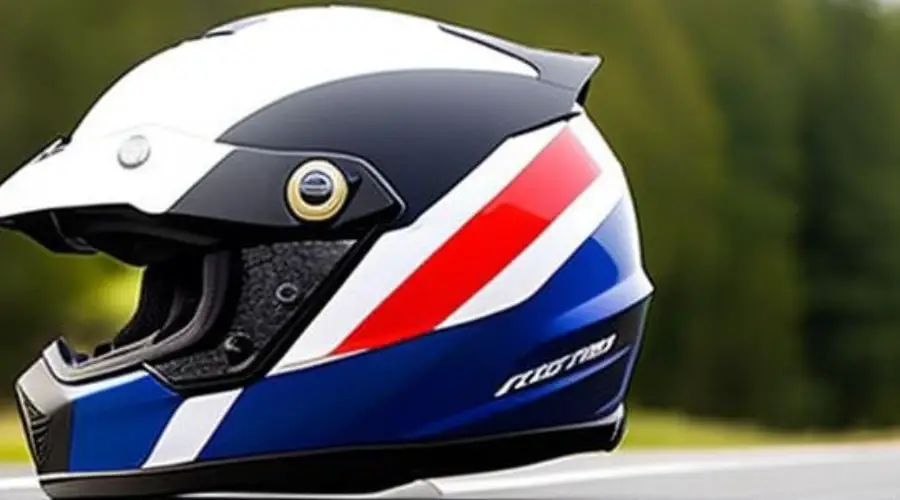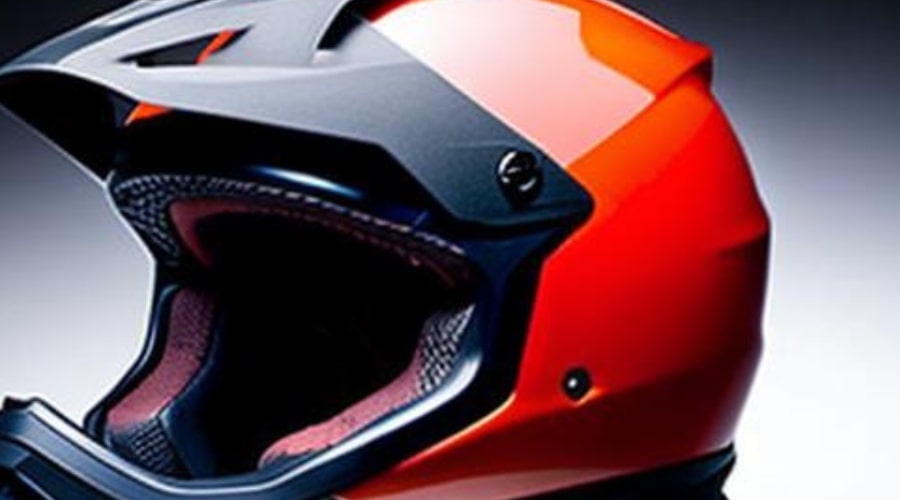If you’re a beginner motorcyclist, it’s important to understand the importance of wearing a helmet. Not only is it required by law in many states, but it can also save your life in case of an accident. With so many options available, choosing your first helmet can be overwhelming. In this article, we’ll guide you through the process of choosing your first motorcycle helmet.
Why Wearing a Motorcycle Helmet is Important
A motorcycle helmet is the most important piece of safety equipment you can wear when riding a motorcycle. Helmets protect your head from serious injuries in case of a crash. It is estimated that wearing a helmet can reduce the risk of head injury by 69% and the risk of death by 42%.
Types of Motorcycle Helmets
There are three main types of motorcycle helmets: full-face, open-face, and half helmets. Let’s take a closer look at each type:
Full-face Helmet
A full-face helmet covers the entire head and face, including the chin. This type of helmet provides the most protection and is the safest option for motorcycle riders. It also offers the best wind and noise protection, making it ideal for long rides. However, it can be hot and uncomfortable in warm weather, and some riders find the full-face helmet restrictive.

Open-face Helmet
An open-face helmet, also known as a ¾ helmet, covers the top, back, and sides of the head, but leaves the face exposed. This type of helmet provides good ventilation and visibility, making it a popular choice for city riding. However, it offers less protection than a full-face helmet and can be noisy and uncomfortable on long rides.
Half Helmet
A half helmet, also known as a brain bucket, covers only the top of the head. This type of helmet provides the least protection and is not recommended for riders who want maximum protection. It is popular with riders who prefer the look and feel of the wind on their face.
Helmet Safety Ratings
When choosing a motorcycle helmet, it’s important to consider its safety ratings. The following are the most common helmet safety ratings:
DOT
The Department of Transportation (DOT) is a federal agency that sets safety standards for motorcycle helmets in the United States. Helmets that meet DOT standards are legal to use on public roads.
ECE
The Economic Commission for Europe (ECE) is a European regulatory body that sets safety standards for motorcycle helmets in Europe. Helmets that meet ECE standards are legal to use in Europe.
Snell
The Snell Memorial Foundation is a non-profit organization that sets safety standards for motorcycle helmets in the United States. Helmets that meet Snell standards are typically more expensive than helmets that only meet DOT standards.
Helmet Fit
One of the most important factors to consider when choosing a motorcycle helmet is fit. A helmet that doesn’t fit properly can be uncomfortable and can even be dangerous in case of an accident.
Measuring Your Head
To determine the correct size for your helmet, you’ll need to measure the circumference of your head. Using a tape measure, measure around the widest part of your head, just above your eyebrows and ears. Take note of the measurement in inches or centimeters.
Trying on Helmets
Once you have your head measurement, you can start trying on helmets. It’s important to try on different brands and models to find the best fit for you. Start by trying on helmets in the size that corresponds to your head measurement. Make sure the helmet is snug but not too tight. You should be able to move your head around comfortably and the helmet should not move around on your head.
Fit Checks
After you’ve found a helmet that feels comfortable, do some fit checks to make sure it’s the right fit for you. First, try to move the helmet around on your head. It should be snug and not move around easily. Next, try to move the helmet up and down or side to side. It should not move more than an inch in any direction. Finally, check the padding around the helmet. It should be snug against your head without any gaps.
Helmet Features
In addition to safety and fit, there are several features to consider when choosing a motorcycle helmet:
Visor
A visor is a clear or tinted shield that covers the face of the helmet. It protects the rider’s eyes from wind, rain, and debris. Some visors are removable or can be replaced with different colors or tints.
Ventilation
A helmet with good ventilation can help keep you cool and comfortable on long rides. Look for helmets with vents on the top, sides, and back.
Weight
A lighter helmet can be more comfortable to wear for long periods of time. However, a heavier helmet may provide more protection in case of an accident.
Noise Reduction
Some helmets are designed to reduce wind noise, which can be helpful on long rides or for riders with sensitive ears.

Helmet Maintenance and Care
To ensure your helmet continues to provide maximum protection, it’s important to maintain and care for it properly. Follow these tips:
- Clean the helmet regularly with mild soap and water.
- Avoid using harsh chemicals or solvents on the helmet.
- Check the helmet for any cracks or damage before each ride.
- Replace the helmet if it has been involved in a crash or is more than five years old.
How to Choose the Right Helmet for You
Choosing the right motorcycle helmet is a personal decision that depends on your riding style, preferences, and budget. Consider the following factors when making your decision:
- Safety ratings: Look for helmets that meet DOT, ECE, or Snell safety standards.
- Type of helmet: Consider the level of protection you need and your riding style when choosing between a full-face, open-face, or half-helmet.
- Fit: Make sure the helmet is snug but comfortable and does not move around on your head.
- Features: Consider the features that are important to you, such as a visor, ventilation, weight, and noise reduction.
- Budget: Set a budget and look for helmets that meet your safety and feature requirements within that budget.
Conclusion
Choosing the right motorcycle helmet is an important decision that can impact your safety on the road. Consider safety ratings, type of helmet, fit, features, and budget when making your decision. Remember to maintain and care for your helmet properly to ensure maximum protection.
Helmetslab is a website that focuses on providing in-depth reviews and information about different types of helmets, including motorcycle helmets and others helmets. I am writing a post with proper research on the info that helps helmet users.
